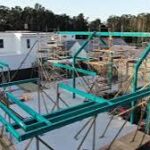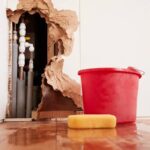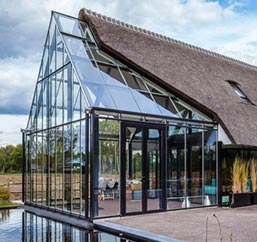Overview
Storms can leave a trail of destruction behind, and one of the most common casualties is the roof. Whether it’s the sharp, sudden impact of hail or the relentless force of wind, roofing systems often take the brunt of nature’s fury. When damage occurs, it’s essential to act quickly—not just for safety reasons, but also to prevent water intrusion, insulation damage, and structural issues.
Roofing companies have structured, methodical processes designed to restore integrity, functionality, and appearance to storm-impacted roofs. These repairs go beyond surface fixes and often involve a combination of inspections, material replacement, insurance coordination, and workmanship that prioritizes long-term durability. We will explore how a roofing company in Joliet restores roofs damaged by hail and wind, using a step-by-step approach to address the complex issues caused by extreme weather.
The Step-by-Step Approach to Storm-Damaged Roof Restoration
- Comprehensive Damage Inspection and Assessment
The first step in restoring a storm-damaged roof is a detailed inspection. Roofing professionals evaluate the entire structure, looking for visible and hidden signs of hail and wind impact. Hail can leave behind dents, cracks, and broken shingles, while wind can lift, curl, or tear materials entirely off the roof. Inspectors examine the roofing materials, the flashing, gutters, vents, and the underlying decking. A proper inspection often involves climbing the roof, using drones or cameras, and sometimes even checking the attic space for signs of leaks or insulation moisture.
The goal is to identify all affected areas, even those not immediately noticeable to the untrained eye. Documentation is vital to this phase, as it supports insurance claims and provides a baseline for repair planning. The roofing team may also speak with the property owner to understand what occurred during the storm, further helping to align visual findings with possible vulnerabilities.
- Collaboration with Insurance and Claim Filing
Once damage is confirmed, roofing companies frequently assist homeowners in dealing with their insurance provider. Filing a claim can be a time-sensitive and detail-oriented task. Roofing professionals help by providing the insurance company with thorough documentation, including photos, measurements, and a written damage assessment. Some companies even attend the adjuster’s inspection to ensure that all issues are accounted for and nothing is overlooked. This collaborative effort helps streamline the claims process and can influence whether the insurance provider approves a full or partial replacement.
Transparency and open communication during this stage are key, as it builds trust between the homeowner, the insurer, and the contractor. Insurance policies often cover hail and wind damage, but the outcome usually depends on how well the damage is documented and presented. Roofing companies play an instrumental role in ensuring all necessary steps are taken for a fair and accurate claim resolution.
- Selection of Replacement Materials and Scheduling Repairs
After insurance matters are resolved, the focus shifts to selecting appropriate materials and preparing for the actual repair work. Homeowners may be able to choose upgraded materials that offer better resistance to future weather events. Roofing companies provide options based on compatibility with the existing roof, local climate conditions, and budget considerations. Once the materials are selected, a project timeline is created. Weather conditions, availability of supplies, and the scope of the repairs all factor into scheduling.
Communication remains consistent during this phase, as crews must coordinate access, equipment deliveries, and safety preparations. The company ensures that everything needed for the repair is ready to avoid delays and interruptions. Whether it’s replacing shingles, metal panels, or tiles, the material selection and preparation stage is a crucial transition point between planning and execution.
- Removing Damaged Sections and Addressing Structural Issues
Restoration begins with the removal of all damaged components. This isn’t limited to the outermost layer; underlayment, flashing, and sometimes even the decking may be compromised and require replacement. Roofing crews systematically strip the affected areas and expose the roof’s underlying structure. If rot, mold, or moisture is found in the decking or insulation, those issues are addressed immediately to prevent long-term problems.
Structural integrity is a priority, and roofing teams often install improved waterproofing layers or protective barriers to bolster the new installation. This phase can be labor-intensive, but it ensures the longevity of the repairs. Safety protocols are followed closely, with scaffolding, harnesses, and protective gear used throughout the removal and rebuilding. By taking the time to fully clean and prepare the surface, roofing companies lay the foundation for a secure and weather-resistant new roof.
Restoring a roof after hail and wind damage is a comprehensive process that involves much more than replacing a few shingles. From the initial inspection and insurance collaboration to material selection, structural repair, and final installation, roofing companies follow a deliberate and strategic approach. Each step is designed to address immediate concerns while also building a stronger, more durable roofing system. By focusing on thorough assessments, clear communication, and quality workmanship, these companies ensure that homes are protected not just today but in the face of future storms.











